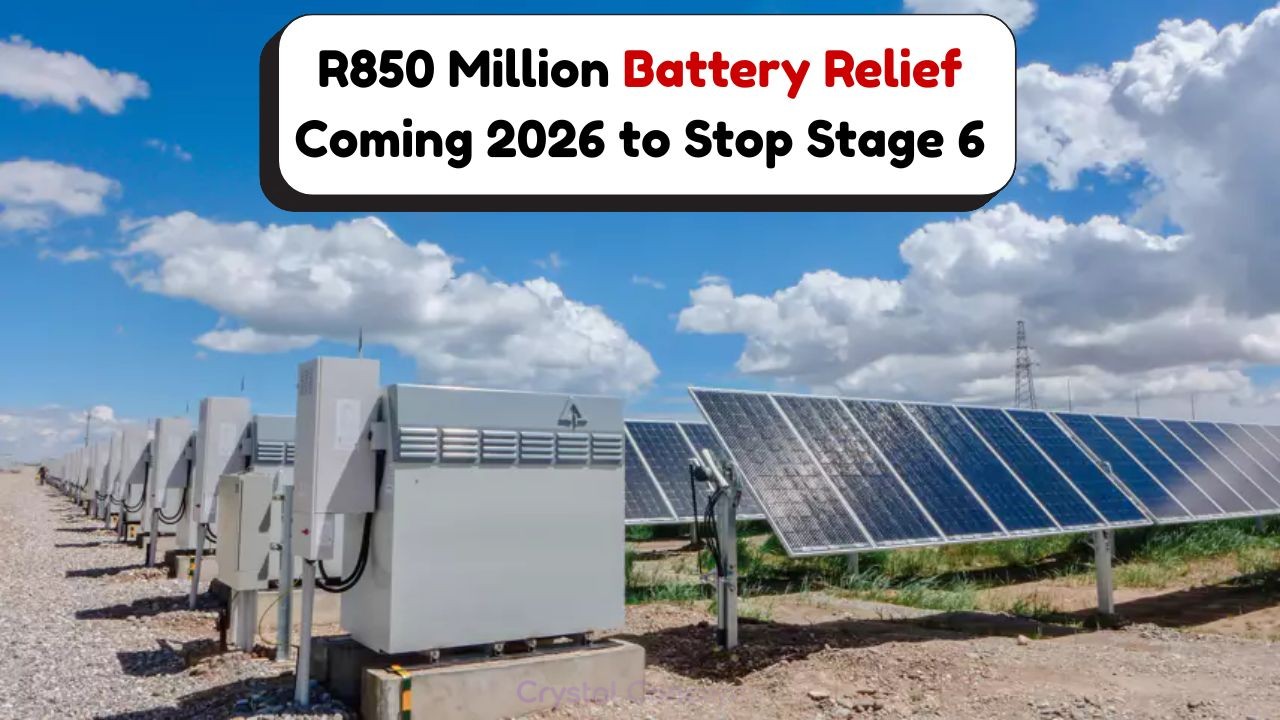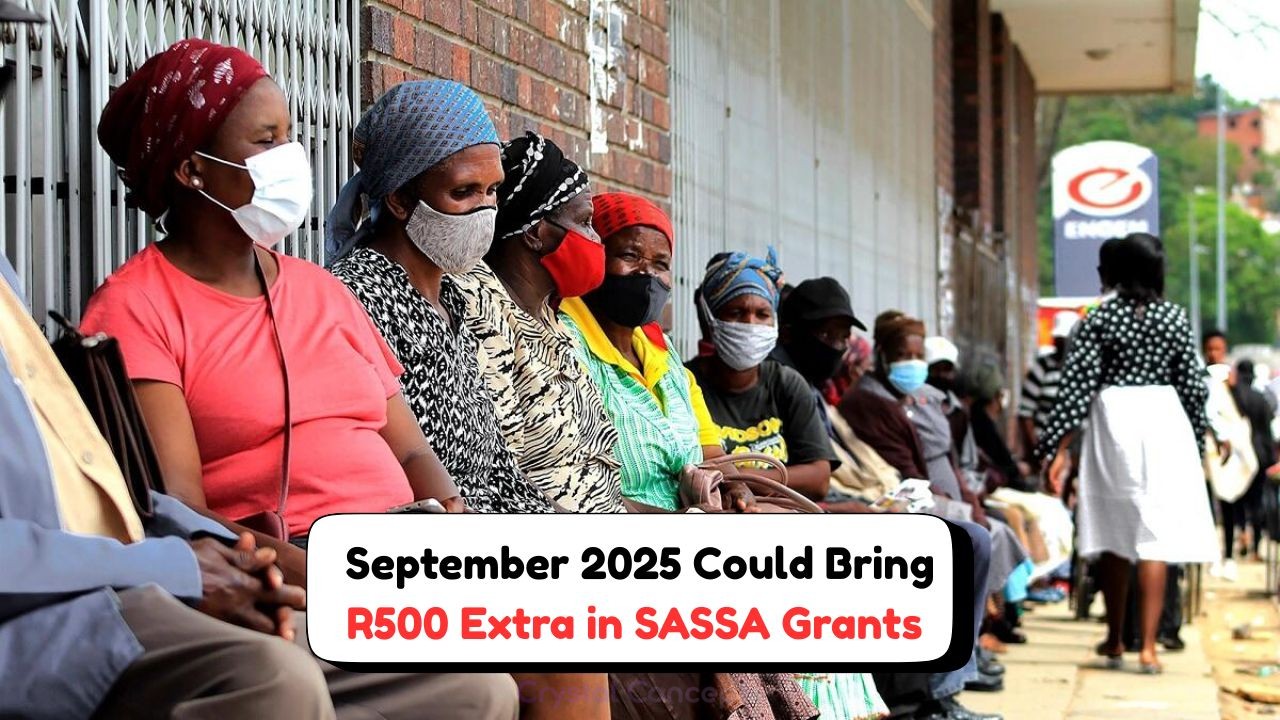R850M Battery Boost: Will the 2026 Loadshedding Rescue Plan Protect SA from Stage 6?: As South Africa continues to grapple with the persistent challenge of loadshedding, the announcement of an R850 million battery investment has sparked renewed hope and debate. This ambitious plan, set to unfold by 2026, aims to fortify the country’s energy infrastructure and mitigate the severe impacts of Stage 6 loadshedding. With energy reliability being a critical concern for businesses and residents alike, this initiative is poised to deliver a significant boost to the national grid. The focus is on integrating advanced battery storage solutions that promise to store surplus renewable energy, thus making it available during peak demand periods. But can this substantial investment truly shield South Africa from the dreaded Stage 6 outages, and what implications does it have for the future of the country’s energy landscape? Let’s delve into the details of this bold rescue plan and explore its potential impacts.
Understanding the R850 Million Investment in Battery Storage
The R850 million battery boost is part of a broader strategy to enhance South Africa’s energy resilience. By investing in cutting-edge battery technology, the government aims to stabilize the power supply and reduce the frequency and severity of loadshedding. This initiative is not just about financial investment; it’s a commitment to sustainable energy solutions that align with global trends toward renewable energy sources.
- The battery investment is expected to support the integration of renewable energy into the national grid.
- It aims to provide a buffer during peak demand times, thus reducing reliance on emergency power cuts.
- The plan includes deploying batteries that can store large amounts of energy efficiently.
- This project aligns with South Africa’s National Development Plan to transition to a low-carbon economy.
- The initiative is also expected to create jobs in the green technology sector.
- It represents a significant step toward achieving energy security for the nation.
- The success of this plan could set a precedent for future energy policies.
- Public-private partnerships are being encouraged to support this initiative.
Can the 2026 Loadshedding Rescue Plan Deliver on Its Promises?
The 2026 loadshedding rescue plan, with its R850 million battery investment, has been met with both optimism and skepticism. While it promises to alleviate the energy crisis by enhancing storage capacities, the effective implementation of this plan remains a subject of debate. One of the critical factors will be the integration of these technologies within the existing grid infrastructure.
 Discover the Complete SASSA Payment Calendar for August–September: Key Dates & Categories Unveiled!
Discover the Complete SASSA Payment Calendar for August–September: Key Dates & Categories Unveiled!
| Year | Investment (R million) | Energy Storage Capacity (MWh) | Expected Load Reduction | Job Creation |
|---|---|---|---|---|
| 2023 | 200 | 50 | 15% | 500 |
| 2024 | 250 | 75 | 20% | 600 |
| 2025 | 300 | 100 | 25% | 700 |
| 2026 | 100 | 50 | 10% | 200 |
The Impact of Battery Storage on South Africa’s Energy Crisis
Battery storage technology is not just an investment in hardware; it’s an investment in energy security and sustainability. By storing excess energy generated from renewable sources like wind and solar, these batteries can help balance supply and demand, reducing the pressure on coal-fired power stations and decreasing carbon emissions.
 Starting 5 September: How to Secure Your R450 Monthly Fuel Support with SASSA's New Subsidy Card!
Starting 5 September: How to Secure Your R450 Monthly Fuel Support with SASSA's New Subsidy Card!
- Battery storage can significantly reduce dependency on traditional energy sources.
- It enhances the reliability of renewable energy, making it a viable primary energy source.
- This technology can lead to substantial cost savings in the long run.
- Battery systems can be deployed quickly, offering immediate relief during energy crises.
- They provide a backup during unexpected outages, ensuring continuity of supply.
- Energy storage systems are essential for integrating renewable energy at a larger scale.
- They play a crucial role in stabilizing grid frequency.
Challenges and Opportunities in Implementing the Loadshedding Plan
While the benefits of battery storage are clear, several challenges could impact the successful implementation of the loadshedding rescue plan. These challenges include the high initial cost of technology, integration with existing infrastructure, and potential regulatory hurdles. However, these challenges also present opportunities for innovation and collaboration among stakeholders.
Overcoming obstacles:
- Collaboration between government, private sector, and international partners to share technology and expertise.
- Development of incentives to encourage investment in green technologies.
- Training programs to equip the workforce with skills needed for new energy solutions.
- Public awareness campaigns to promote energy conservation and efficiency.
- Policy reforms to streamline processes and facilitate the adoption of new technologies.
The Path Forward: What Lies Ahead for South Africa
The R850 million battery boost is a critical step toward addressing South Africa’s energy woes, but it is not the final solution. Continued investment in renewable technologies, coupled with supportive policies and stakeholder collaboration, will be essential for achieving long-term energy security.
Future Prospects:
- Continuous monitoring and evaluation of the plan’s effectiveness.
- Adjustments to strategy based on emerging technologies and market conditions.
- Expanding the scope of investment to include other renewable energy sources.
- Encouraging innovation through research and development initiatives.
- Building resilience against future energy shocks by diversifying energy sources.
FAQs: Understanding the Loadshedding Rescue Plan
What is the main goal of the R850 million battery boost?
The primary aim is to enhance energy storage capacity, reduce loadshedding, and stabilize the power grid in South Africa.
How will battery storage help reduce loadshedding?
Batteries store excess energy during low demand and release it during peak times, reducing the need for power cuts.
What challenges does the rescue plan face?
Challenges include high costs, integration issues, and regulatory barriers, but these also offer opportunities for innovation.
Is the battery investment enough to end loadshedding?
While significant, the investment is part of a broader strategy. Additional measures are needed for a comprehensive solution.
How does this plan fit into South Africa’s energy goals?
It aligns with the National Development Plan’s vision of transitioning to a sustainable, low-carbon economy.







